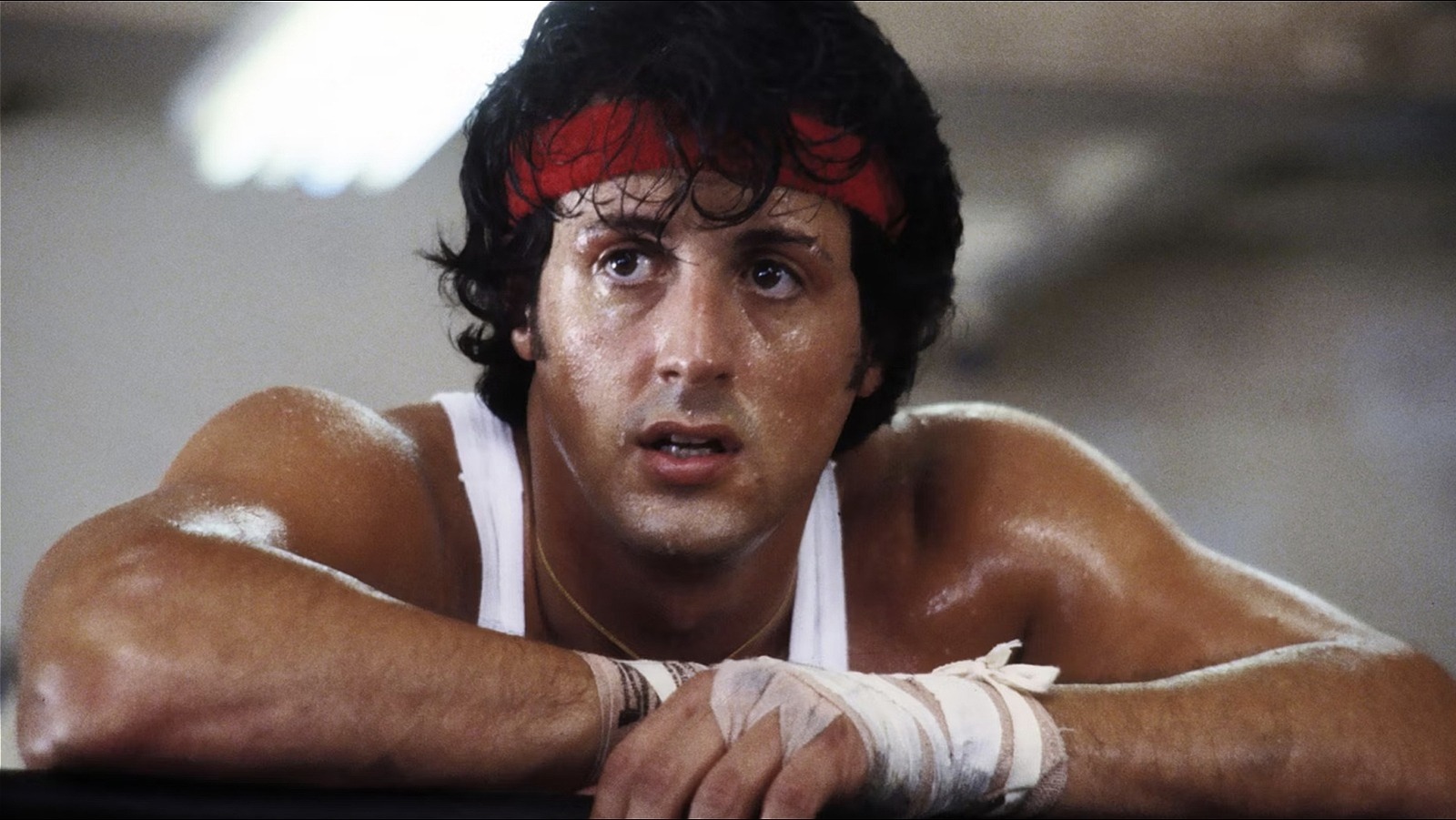
Among various film genres, sports movies have an unquestionable knack for igniting audience enthusiasm. Witnessing an individual or team strive towards a seemingly impossible physical feat is a captivating spectacle we are naturally attracted to. Although there are numerous boxing films (many of them based on real events), none can match the brilliance of the “Rocky” series. Created by Sylvester Stallone, who wrote the screenplay on spec and secured the lead role, the original “Rocky” was a massive success, giving birth to numerous sequels, both direct and legacy ones. The question arises: What is the optimal sequence to watch these sports drama films?
For optimal enjoyment, it’s best to follow the chronological order when experiencing the Rocky series. Begin with the first movie released in 1976, then continue watching the subsequent films up to the present. This includes all six Rocky films, as well as the spin-off franchise Creed and its sequels. Whether you’re a seasoned fan of Sylvester Stallone’s Rocky films or a recent fan drawn in by Creed who now wishes to explore the original series, be sure to watch this franchise in the sequence outlined below:
- “Rocky” (1976)
- “Rocky II” (1979)
- “Rocky III” (1982)
- “Rocky IV” (1985)
- “Rocky V” (1990)
- “Rocky Balboa” (2006)
- “Creed” (2015)
- “Creed II” (2018)
- “Creed III” (2023)
Let’s explore the reasons why watching the “Rocky” movies sequentially (in their original timeline) provides the most satisfying experience.
Why is that the correct order to watch the Rocky movies?
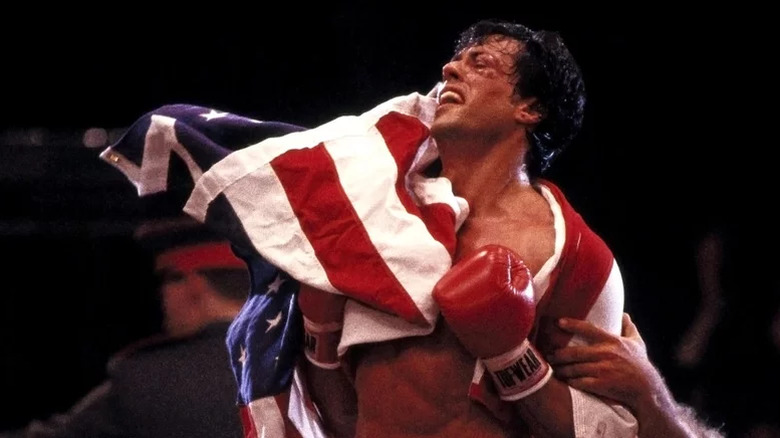
It’s usually beneficial to watch a movie series from its beginning, as this replicates the original audience’s experience with a film that is typically easier for new viewers to understand. For example, when diving into “Rocky” (1976), starting from the first project gives context to Rocky’s journey from a debt collector in the Mafia world to a professional boxer. Without understanding his background as a club fighter, his relationship with Adrian (Talia Shire), and the competition between him and Apollo Creed (Carl Weathers), the subsequent films in the franchise may not resonate with you.
Throughout the ’70s and ’80s, there was usually a new “Rocky” movie every couple of years, showcasing Rocky’s journey towards his zenith while chasing the American Dream. Spanning over five separate films, the series details the entirety of his initial boxing career. It can be quite disconcerting to watch these movies out of sequence, leaving one feeling somewhat short-changed. The 1990 release “Rocky V” was followed by “Rocky Balboa,” which came out 16 years later, offering a much more fulfilling end to the original storyline. This final installment serves as a poignant epilogue and farewell to Rocky’s boxing career.
In essence, while you can watch the “Creed” series and its sequels separately from the “Rocky” films, they are richer when viewed in sequence due to the extensive backstory involving Rocky Balboa and Apollo Creed that significantly impacts the emotional development of the “Creed” storyline. Consequently, it’s advisable to follow the chronological order for an optimal viewing experience.
Rocky (1976)
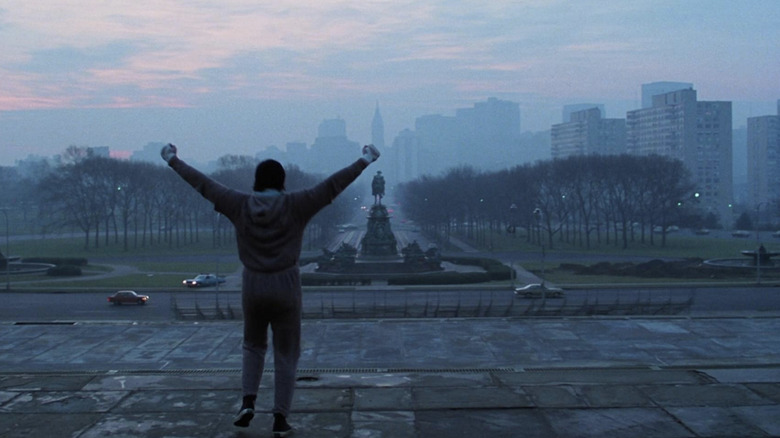
To fully appreciate the “Rocky” movies, you should start with the original 1976 film. This underdog boxing story isn’t just a compelling narrative; it was also an achievement in itself to produce this independent movie. Interestingly, Sylvester Stallone wrote the script with himself in mind from the outset. Despite offers from multiple production companies, Stallone persisted in keeping control of the project and playing the lead role. Eventually, producers Irwin Winkler and Robert Chartoff came on board. The film was a massive success, making its distributors (United Artists) extremely pleased. Despite its bittersweet ending, “Rocky” stands as an inspiring testament to human resilience, not only in the storyline but also behind the scenes.
Beginning with “Rocky” is crucial as it forms the foundation for the entire series. This film introduces Rocky Balboa, Philadelphia’s beloved boxer, who rises to stardom. It also introduces his mentor, Mickey Goldmill (played by Burgess Meredith), and sets up his intense rivalry with Apollo Creed. Moreover, it explores the concept of perseverance, which is central to Rocky’s journey. Additionally, the characters of Paulie Pennino (portrayed by Burt Young) and Adrian, Paulie’s sister, play significant roles in the narrative. With these elements in place and the vivid backdrop of Philadelphia established, the stage is set for the rest of the series.
Rocky II (1979)
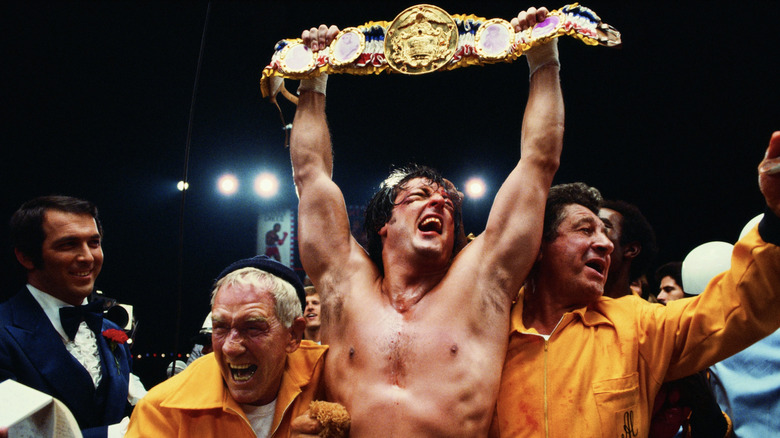
In the aftermath of the initial movie, “Rocky II” unfolds as the film that solidifies Rocky Balboa’s status as a formidable boxer. Despite his initial intentions to retire from professional boxing, Apollo Creed manages to lure him back for another bout. Although Rocky falls short in their first encounter, he comes incredibly close to dethroning Apollo as heavyweight champion, causing Apollo to worry about the potential consequences. As Apollo grapples with these feelings, Rocky and Adrian tie the knot and embark on their new journey together. Eventually, Rocky re-enters the ring for a rematch that rivals the intensity of their first fight. By the end of “Rocky II,” there’s a more victorious tone than in the original film.
Initially, John G. Avildsen directed the first Rocky film, but it was Sylvester Stallone who took over the helm for “Rocky II.” In this sequel, Stallone sets the tone and events that become characteristic of all Rocky movies, creating a follow-up worthy of the original. Whether you’re a fan of the first Rocky or Rocky II, it’s clear that each film contributes to a larger whole. With a bigger budget for production, “Rocky II” boasts more visually stunning scenes, and Stallone’s vision for the franchise shines through in his directorial approach.
Rocky III (1982)

In “Rocky III,” which unfolds five years following Rocky’s victory in “Rocky II,” Sylvester Stallone reprises his roles as director, screenwriter, and lead actor. Over the years, Rocky has successfully defended his heavyweight title and established himself as a formidable boxer, leading to increased wealth and fame. However, this newfound prosperity means he stands to lose much more when Clubber Lang (Mr. T) steps forward as a challenger. It is revealed that Mickey had been arranging matches for Rocky where he was confident of victory, fearing another bout like the one with Apollo Creed could be fatal. But when Rocky encounters Lang, things don’t go his way, forcing him to rebuild his reputation and regain his former glory.
The movie “Rocky III” is fantastic, as it brings the series back to its core themes and makes Rocky grapple with his own mortality for the first time. After losing someone dear to him and seeming to reach the end of his boxing career, Rocky seeks help from none other than Apollo Creed. “Rocky III” is a crucial part of the entire “Rocky” saga that never fails to satisfy. And let’s not forget the unforgettable final showdown between Rocky and Clubber Lang, which many consider the best fight in the series – a brutal, high-stakes battle where everything is on the line for our hero. It’s no surprise that this third installment, complete with Survivor’s “Eye of the Tiger” as its theme song, outperformed its predecessors at the box office.
Rocky IV (1985)
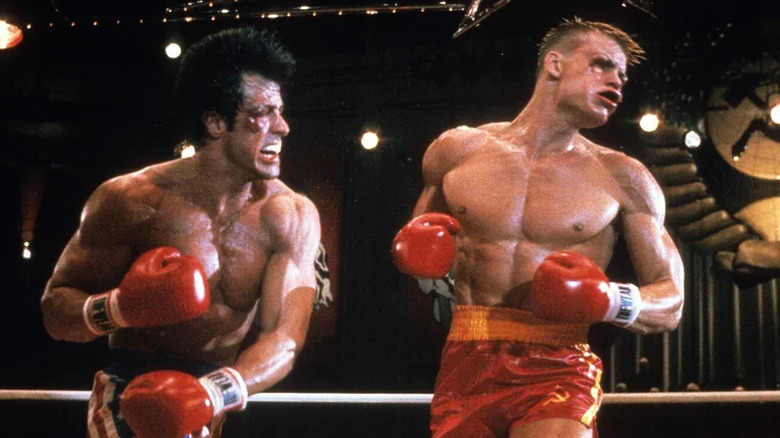
Among all the “Rocky” movies, it’s hard to find one more famous or cherished than “Rocky IV.” This film was released during the 1980s, a period marked by Cold War anxiety about nuclear conflict. In this unique and powerful representation of its era, directed once more by Stallone, Apollo Creed returns for one final fight against Soviet boxer Ivan Drago, portrayed by Dolph Lundgren. Drago, boasting that Russian men are of a superior stock, challenges America, ultimately leading to the shocking death of Creed in the ring. To avenge his friend and his nation, Rocky travels to the Soviet Union to confront Drago, resulting in an exchange of almost unbelievable punches. Filled with patriotism and a message of global unity, “Rocky IV” was strikingly relevant in its time and continues to resonate today.
In “Rocky IV,” you’ll find iconic battles, Rocky’s most intense training in a chilly Russian setting, making it an enjoyable watch. However, it does show its ’80s roots, not just through Cold War politics but also with a peculiar mystery: Whatever became of Paulie’s robot? Yes, there is a robot in this film, but it mysteriously vanishes without a trace. For die-hard “Rocky IV” enthusiasts, the “Rocky IV: Rocky vs. Drago — The Ultimate Director’s Cut” might be the best choice – and yes, it edits out the robot entirely.
Rocky V (1990)
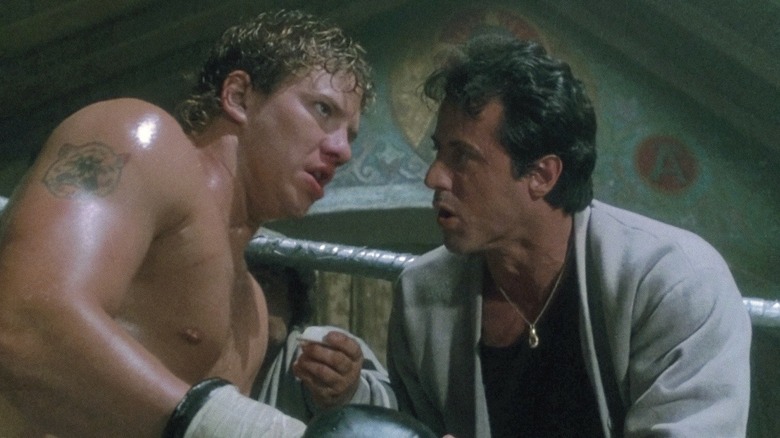
1990 saw the return of director John G. Avildsen for “Rocky V,” with Sylvester Stallone once more penning the script. The story unfolds post-Rocky’s confrontation with Drago, which left him with additional health issues necessitating an early retirement. Tragically, Rocky and his family find themselves penniless after Paulie strikes a poor business deal with their lawyer, forcing them to return to their old Philadelphia neighborhood. In this familiar setting, Rocky assumes control of Mickey’s former gym, nurturing new aspiring boxers such as Oklahoma native Tommy Gunn (portrayed by real-life boxer Tommy Morrison).
Initially, things appear promising, but they soon take a turn for the worse as Rocky, instead of focusing on his son Robert (Sage Stallone), starts to overlook him. Matters worsen when Gunn gets carried away by the allure of boxing’s fame and wealth, not only distancing himself from Rocky but also becoming aggressively hostile towards him, culminating in a fierce street fight to settle their differences.
Among all “Rocky” movies, Sylvester Stallone particularly dislikes “Rocky V”. Many share this sentiment as it fails to meet the high standards set by the earlier “Rocky” sequels and isn’t nearly as engaging to watch. It’s no surprise that there was a significant gap between “Rocky V” and the following movie, released more than 15 years later. While “Rocky V” incorporates several plotlines from previous films, like Tommy Gunn himself, it lacks the warmth and charm that made the other movies so appealing.
Rocky Balboa (2006)

In 2006, I, Sylvester Stallone, stepped back into the director’s chair for the first time since “Rocky IV,” ready for one final bout in “Rocky Balboa.” After years of wanting to wrap up the “Rocky” saga with a more optimistic tone that resonated with the series, I fought hard to bring “Rocky Balboa” to life. This film was both a tribute to the legacy and a farewell to the franchise. As Rocky, I’m now an older man dealing with the loss of Adrian to cancer and trying to reconnect with my son, Robert, played by Milo Ventimiglia. When I renew my boxing license and accept a challenge from current heavyweight champ Mason “The Line” Dixon (portrayed by former light heavyweight boxing champion Antonio Tarver), I find myself back in the ring once more. Just like the original 1976 film, I go the distance with Dixon, and for me, that’s all that truly matters in the end.
Compared to “Rocky V”, “Rocky Balboa” provides a more fitting farewell for Rocky and his co-stars. It’s an impressive tale that emphasizes legacy and honor, aligning closely with the essence of Stallone’s initial film. One of the most impactful legacy sequels to date, “Rocky Balboa” serves as a powerful conclusion to Rocky’s six-film saga. However, it should be noted that this movie doesn’t mark the absolute end of Stallone’s involvement with the character or the franchise.
Creed (2015)

2015 saw director Ryan Coogler breathe fresh life into the “Rocky” series via “Creed,” a spin-off that serves as both a standalone film and a continuation of the original storyline. Instead of focusing on Rocky Balboa, “Creed” centers around Adonis “Donnie” Johnson (played by Michael B. Jordan), an aspiring boxer who is Apollo Creed’s illegitimate son and never had the opportunity to know his father. In an attempt to honor his father’s legacy, Adonis endeavors to become a fighter in his own right. However, he requires a seasoned trainer to guide him on this journey. This leads Adonis from Los Angeles to Philadelphia where he persuades Rocky Balboa to take him under his wing. Initially reluctant, Rocky eventually agrees, and Adonis embarks on a journey reminiscent of the original “Rocky,” complete with a love interest akin to Adrian, played by Tessa Thompson in this installment.
In its debut as the first “Rocky” franchise movie not written by Stallone, “Creed” lived up to its expectations. While Rocky isn’t the main character in this film, he assumes a role reminiscent of his former mentor Mickey, which adds an unexpected yet fitting touch. “Creed” captivated both seasoned “Rocky” fans and new viewers from the get-go, surpassing all expectations. Consequently, it was only natural that “Creed” spawned additional installments, with Rocky being a part of its expansion.
Creed II (2018)
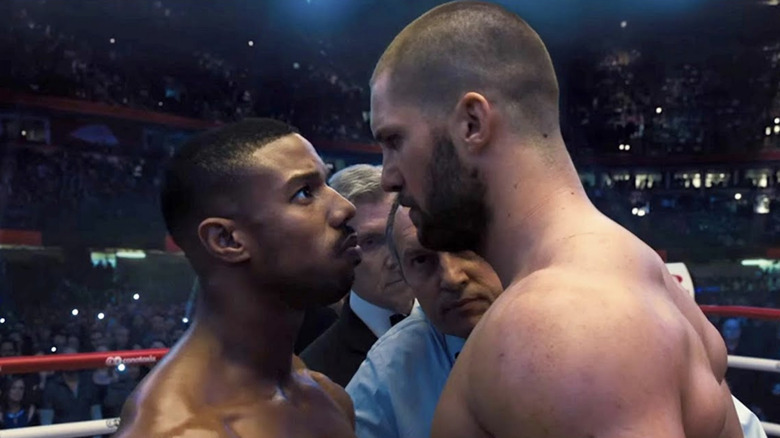
Following the triumph of “Creed,” it wasn’t unexpected that “Creed II” graced the silver screen within a few years. What was somewhat unexpected, though, was Ryan Coogler not returning as director, with Steven Caple Jr. stepping up instead. Furthermore, Sylvester Stallone took on more roles this time, serving not only as a star and producer but also co-writing the sequel script (with Juel Taylor). This dual role served to continue the legacy of the beloved “Rocky IV.” Indeed, “Creed II” serves as a follow-up to the original “Creed,” but it also weaves in narrative threads that harken back to the Cold War era, placing Adonis Creed against Viktor Drago (Florian Munteanu), the son of the man who fatally defeated his father in the ring. For fans of “Rocky,” this showdown was a long-awaited event, offering a more complete resolution to the Creed/Drago feud.
Notably, ‘Creed II’ marks Sylvester Stallone’s final appearance in the ‘Rocky’ series. The movie concludes with Rocky reconciliating with his son Robert and Adonis finding peace with the legacy of the father he never knew. In many aspects, ‘Creed II’ seems to wrap up the franchise, yet it also sets the stage for Adonis Creed’s future adventures. Despite being potentially Stallone’s farewell to the franchise, there is another film left on the schedule.
Creed III (2023)
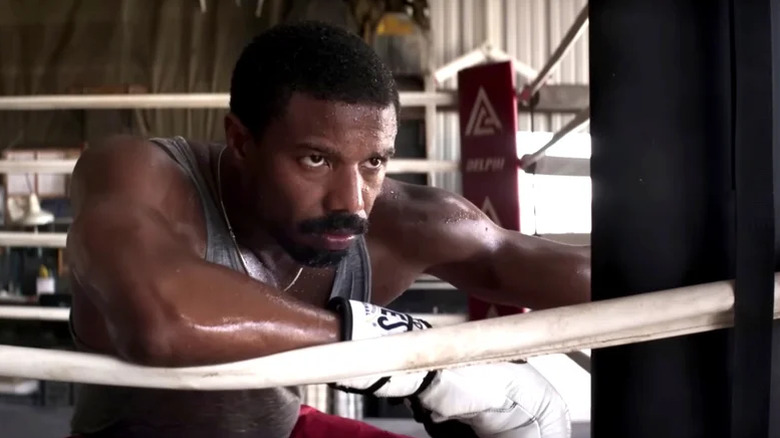
In his first attempt at directing, Michael B. Jordan takes on the role previously held by Sylvester Stallone for “Creed III”. Although Rocky is referenced and Stallone remains a producer, the story shifts Adonis, Bianca, and their daughter Amara (played by Mila Davis-Kent) from one coast to another, landing them in Los Angeles. Here, Adonis reconnects with his roots, including his old friend Damian Anderson (portrayed by Jonathan Majors), who seeks a boxing match against Adonis. Initially agreeing, their confrontation results in Diamond Dame Anderson becoming the new champion. As they grapple with their past traumas in the ring, both Adonis and Dame are compelled to face their issues head-on.
Among many subtle points you might have overlooked in “Creed III,” the most significant is that despite Rocky not being physically present to guide him, Adonis internalized his mentor’s wisdom. He employs Rocky’s teachings to prepare himself to face Dame, both in the ring and beyond it. It appears as though an opportunity was missed for Rocky to support Adonis during Mary Anne Creed’s (Phylicia Rashad) funeral, but the filmmakers skillfully navigated these circumstances given the constraints at hand.
Do you have to watch the Creed movies?
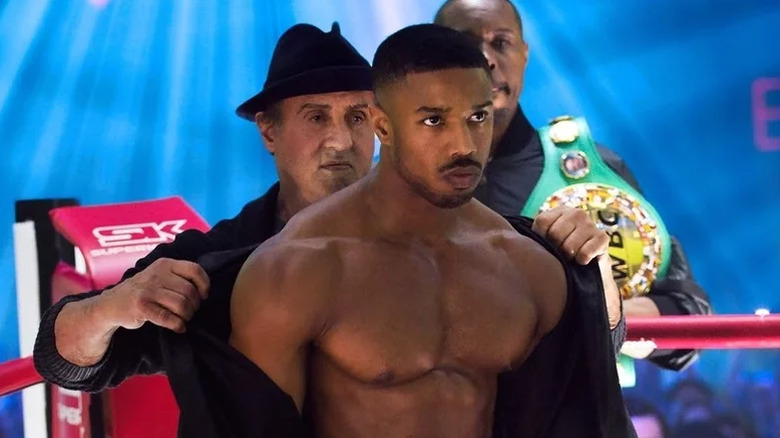
After examining all these movies, you might be wondering if watching every ‘Creed’ film is really necessary. To answer your question, I would say it’s optional but highly recommended. The films between “Rocky” and “Rocky Balboa” essentially tell the main Rocky story. They show his boxing career in its entirety, from the big picture down to his personal life. As mentioned before, Stallone intended “Rocky Balboa” to be a conclusive chapter for the series, and it certainly feels that way. In this final installment, Rocky reconciles with his son, and he demonstrates once more that he can go the distance. It’s a fitting ending. However, it doesn’t quite wrap everything up completely.
Instead of ending the story after “Rocky Balboa”, the movie “Creed” adds another layer to the character by focusing on mentorship, something that could have been better portrayed in Rocky’s relationship with Tommy Gunn. In essence, Adonis serves as the mentee that Rocky should have had, helping to rectify a missed opportunity from “Rocky V”. Furthermore, “Creed II” provides a conclusive emotional resolution for the character. Although some aspects of Rocky’s interactions with Robert may seem repetitive compared to “Rocky Balboa”, dealing with the unresolved issues stemming from his encounter with Ivan Drago decades prior is a fitting conclusion that Stallone felt warranted further exploration.
Despite the absence of Rocky in “Creed III”, Sylvester Stallone might rejoin the “Creed” franchise if a compelling narrative arises. The third installment may not seem as essential, but it underscores the enduring impact of Rocky Balboa even beyond his physical presence.
Read More
- Grimguard Tactics tier list – Ranking the main classes
- Gold Rate Forecast
- 10 Most Anticipated Anime of 2025
- USD CNY PREDICTION
- PUBG Mobile heads back to Riyadh for EWC 2025
- Castle Duels tier list – Best Legendary and Epic cards
- Maiden Academy tier list
- Silver Rate Forecast
- Cookie Run Kingdom: Lemon Cookie Toppings and Beascuits guide
- Pi Network (PI) Price Prediction for 2025
2025-05-23 17:32